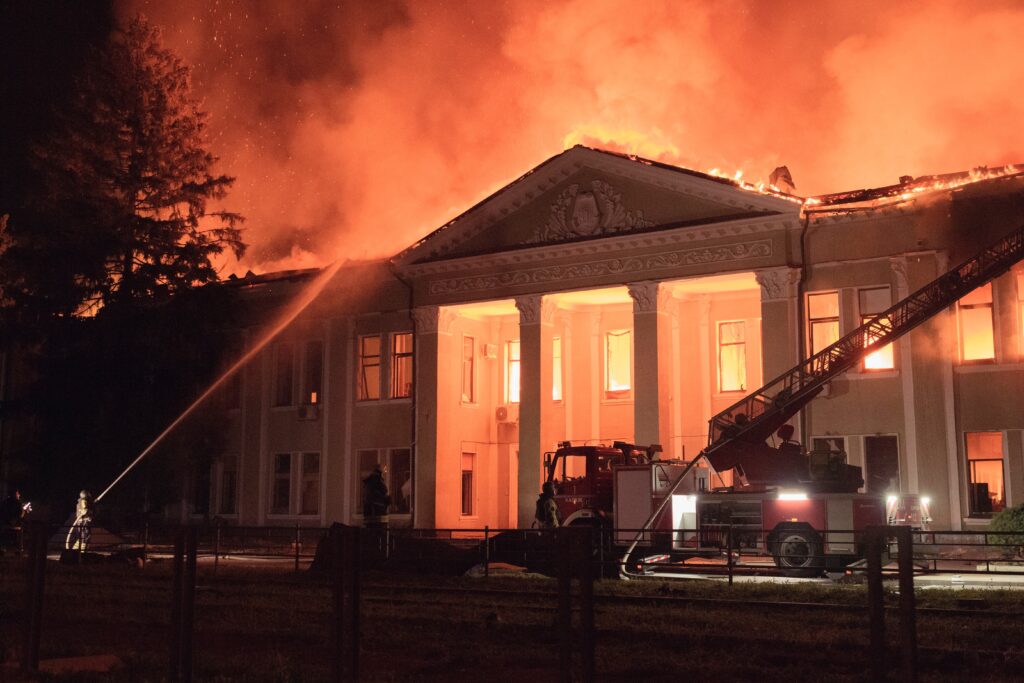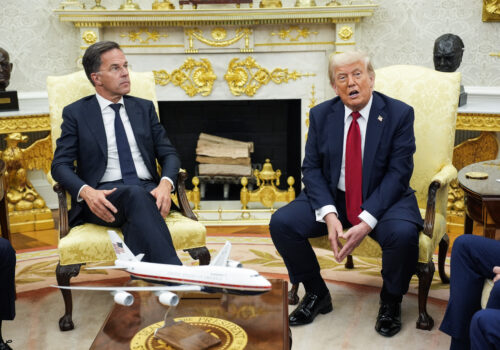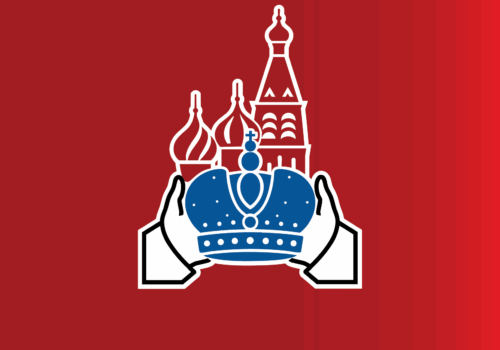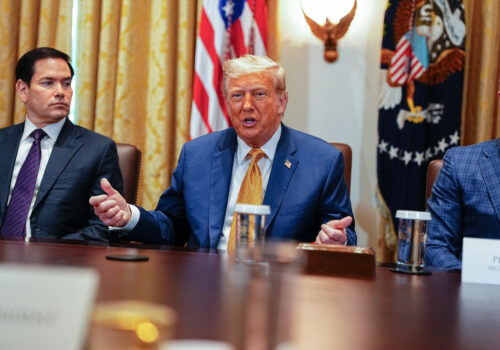Time remains on Putin’s side. That must change.
In the past few weeks, the Trump administration’s approach to Ukraine has whipsawed between near abandonment to a renewed embrace. But one element has appeared firm throughout: There must be a negotiated settlement to end Russia’s full-scale invasion that has raged since February 2022. This may be the common thread between the Biden administration’s view of how Russia’s unprovoked invasion of Ukraine would eventually need to end and the Trump administration’s early pursuit of direct talks between Russia and Ukraine. There will never be a military solution to the war, as US Secretary of State Marco Rubio diagnosed during testimony in May before the Senate Foreign Relations Committee.
Of the possible futures, a negotiated settlement is the path that most favors Ukraine. The alternatives to a settlement are harrowing over both the short and long term, but more so for Ukraine than for Russia. Absent a game-changing development on the battlefield, neither side can innovate or maneuver its way to enough territorial gains to claim outright victory. But Russia can continue to attack Ukrainian military and civilian infrastructure fiercely and frequently, while Ukraine counterpunches to drive the war home to Russia in small, sometimes meaningful, measures. Russian forces could achieve significant territorial gains in a late-summer offensive or Ukraine’s defenses could largely continue to hold—at extraordinary costs to Ukrainians.
This is not to say the costs to Russia now and into the future are insignificant. Russia’s economy has been battered and isolated, and Russian President Vladimir Putin has retrenched from other malign pursuits—in the Middle East, in the Sahel, and in the Caucasus—to concentrate resources for his war in Ukraine. But Putin will likely continue to weather the astonishing costs of the war, including lost troops, equipment, and influence elsewhere around the globe. He will do this by prioritizing defense production, skirting sanctions, and drawing upon his deepened partnerships with North Korea, Iran, and China.
In effect, Putin has created a wartime operation that gives him another precious resource and bargaining chip: time. Putin has long counted on the United States and the international community losing interest and patience with the war in Ukraine. This attritional theory of victory—outlast Ukraine’s ability to defend itself and its friends’ interest in supporting it—is not without reason. US President Donald Trump and his administration, in early moves that whittled down support for Ukraine and ruled out NATO membership, will have reinforced Putin’s sense that time is on his side.

The priority now should be to disabuse Putin of the notion that he can win by outlasting Ukraine and its supporters. So, what immediate steps should be taken to cut short Putin’s perception that he has the luxury of time to outwait Ukraine and its allies?
First, the United States, along with its allies and partners, should announce specific capabilities that will be provided to Ukraine, including air defense interceptors and long-range fires, that complement what has previously been given to Ukraine. Push that assistance to Ukraine urgently so the time between the announcement and the delivery is as short as possible.
Second, the White House should announce that equipment and munitions already purchased through the Ukraine Security Assistance Initiative remain on track for production and delivery to Ukraine. This would create a baseline of continued support for Ukraine’s self-defense that would be complemented by donations from other countries and Ukraine’s indigenous production.
Third, NATO allies should reopen the door for dialogue around security guarantees, including interim steps that could be taken and conditions that would need to be met for each step. Start discussions around realistic requirements for the Ukrainian Armed Forces’ ability to defend the country in the future, and think through future contributions these battle-tested forces could make to NATO missions and exercises.
Fourth, the United States should pursue and announce additional industry-to-industry ties with Ukraine for coproduction and co-development of capabilities, with a particular focus on tapping into Ukraine’s innovations in unmanned systems. Ukraine is at the forefront of developing unmanned aerial and maritime drones that can conduct reconnaissance or attacks at increasing ranges, and it is simultaneously defending itself against barrages of Russian drones. As these unmanned, low-cost platforms fundamentally alter the character of warfare, US and Ukrainian industry can team up to further scale production of offensive and defensive systems.
Fifth, given that Trump threatened “very severe” economic consequences for Putin if there is no cease-fire in fifty days, the United States should prepare a tough tariff package ready to be activated on day fifty-one. Trump should only delay the tariffs if Russia has agreed to—and is abiding by—a cease-fire. This package of tariffs should leverage the Sanctioning Russia Act of 2025, proposed by US senators Lindsey Graham and Richard Blumenthal, which would broadly target Russia’s energy sector and include meaningful secondary sanctions on countries purchasing Russian energy. Enforcement of secondary sanctions and international buy-in for the sanctions regime will be critical, as exceptions and loopholes would weaken it considerably. Diplomatic groundwork should be done now to prepare allies and partners for the probability of sanctions.
It will take far longer than fifty days to change Putin’s mindset that playing for time is in his best interest. But every effort should be made to cause Putin to question his own assumptions and make down payments on a sovereign Ukraine that is able to defend itself now and into the future.
Caroline Zier is a nonresident senior fellow in the GeoStrategy Initiative within the Atlantic Council’s Scowcroft Center for Strategy and Security. She has over fifteen years of experience in national security and defense at the Department of Defense, most recently serving as the deputy chief of staff to former Secretary of Defense Lloyd Austin.
Further reading
Mon, Jul 14, 2025
Will Trump’s pivot on Putin change the war?
Fast Thinking By
Our experts unpack the US president’s turn toward providing military aid for Ukraine and applying economic pressure on Russia.
Mon, Jul 14, 2025
The next generation: Russia’s future rulers
Russia Tomorrow By Mikhail Zygar
The latest report in the Atlantic Council’s Russia Tomorrow series explores the rising generation in the Kremlin-connected elite and what this shift means for Russia’s future.
Fri, Jul 11, 2025
Turning on Putin would fit Trump’s trend of second-term wins
Inflection Points By Frederick Kempe
Taking a tougher stance on the Russian president, who has not yet taken peace-making efforts seriously, would build on Trump’s recent successes.
Image: Russian President Vladimir Putin looks on during a meeting with Andrei Nikitin on his appointment as acting transport minister, in Moscow, Russia July 7, 2025. Sputnik/Mikhail Metzel/Pool via REUTERS



